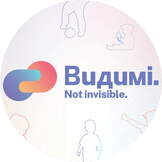“My son was diagnosed with an autism spectrum disorder. Out of the blue, but I had to pull myself together. A bioacoustic therapy was recommended as an advanced method. I did not understand the doctor’s medical terminology, some parents of ‘special’ children claim that this is another ‘pumping out’ of money from desperate people, and there is too much conflicting information on the Internet. How to be and who to believe? What is the BAT, and is it an effective tool in the treatment of autism?”
Autism is a genetic disorder and therefore incurable. But modern medicine offers a wide range of tools that help, if not get rid of, then as much as possible compensate the child’s condition. Among the newest methods is bioacoustic therapy (BAT). This tool is a leader among assistive techniques due to its simplicity, accessibility, and efficiency.
What is bioacoustic therapy (BAT)
Bioacoustic therapy is a unique method of influencing the brain, which combines the tools of neurotherapy, biocontrol, and music therapy. The BAT is intended for people suffering from a wide range of diseases of the central nervous system, cardiovascular pathologies, psychosomatic disorders, post-traumatic deviations, organic brain lesions. The technology has presented itself well both for the treatment and prevention of both children and adults.
All processes in the body are controlled by the brain. In the case of developmental disorders or injuries, some areas ‘inhibit’, which manifests itself in the form of various pathologies – ASD, for example. Children with autism spectrum disorders suffer from delayed psychophysical, speech, and behavioral development, which requires complex therapeutic measures. Therefore, bioacoustic therapy is ‘what is needed’. The method is based on the complex effect of sound signals on the child’s brain and nervous system, which contributes to the rapid restoration of neural connections and self-regulation of the brain.
Indications for the use of the BAT:
- violations of speech development of various etiologies: alalia, dysarthria, stuttering, dyslexia, etc.;
- mental developmental disorders: autism spectrum disorders, mental retardation, etc .;
- bad school learning;
- attention deficit hyperactivity disorder – the child’s level of self-control increases and impulsivity decreases;
- post-traumatic syndrome;
- neuroses and pain syndromes, depression, chronic fatigue syndrome, migraines;
- enuresis, tics, obsessive movements;
- restoration of the psychophysiological status of the brain after trauma;
- treatment of withdrawal symptoms in drug and alcohol addicted patients;
- sleep disorders, eating behavior (psychosomatics), stress – after the sessions, the natural biorhythms of a person ‘wake up’;
- disorders of the gastrointestinal tract and pathology of internal organs (ulcer, gastritis, colitis, irritable bowel syndrome, constipation);
- atopic dermatitis, bronchial asthma, convulsions;
- Tourette’s syndrome;
- cerebral palsy;
- epilepsy (only if prescribed by a doctor!);
- recovery after strokes, heart attacks, etc.;
- normalization of blood pressure;
- general strengthening of the body, preparation of athletes for competitions, children for exams.
The bioacoustic therapy technique
With the help of a special software complex, electrical signals from the brain are converted into a sound. That is, the patient during the session listens to how his brain works. In the process of listening to such ‘music’, pathological processes and developmental defects are eliminated, as evidenced by the data of the encephalogram in real-time.
This is the main difference between bioacoustic therapy and Tomatis sessions because, during the latter, the patient listens to a previously recorded sound, the source of which is not himself. Although this tool is in no way inferior to the BAT in terms of efficiency. Also, Tomatis, the courses of which are conducted in the “Child with Future’ kindergarten, helps to create compensatorily and ‘bypass’ mechanisms in the brain, which allows a child, in the presence of pathologies, to learn to use alternative forces of the body in thinking, speech, and activity. Bioacoustic therapy is aimed at direct restoration of the affected areas of the brain, which, as a result of treatment, begin to ‘work’ as needed.
Bioacoustic therapy is carried out in courses – from 7 to 15 sessions. The duration of each is from 20 to 30 minutes, and it does not tire the child. The total number of sessions required is determined by the condition of a particular child, but the first results are visible after the first lessons. Therefore, doctors recommend taking several courses of bioacoustic therapy per year. At the same time, it is important to remember that the results achieved will not go anywhere over time – if the effect has already been achieved, then it is fixed forever.
The baby is placed on an armchair or couch (often children are so relaxed that they involuntarily fall asleep), sensors are installed for fixation on the EEG. Then they put on tight-fitting headphones and turn on the ‘brain music’. During the session, the child is allowed to play quiet games, draw or sculpt – the activity of fine motor skills will only enhance the effect of the BAT. At the same time, the sound signal during the bioacoustic therapy session is well perceived and does not irritate, which is especially important for autistic children and their sensory features.
The advantages of bioacoustic therapy:
- increase in performance from the first lesson and the launch of self-regulation processes, which contributes to the consolidation of results for a long time;
- mobilization of all the forces of the body in a short period of time, increasing the immune response;
- application of the technique for a wide range of diseases and disorders – a ‘miracle pill’ with 25 years of experience and proven effectiveness in 85% of cases (for example, the severity of symptoms in attention deficit hyperactivity disorder decreases 2-2.5 times);
- no age restrictions and good patient tolerance;
- the method enhances the effect of other therapeutic techniques and medications, which speeds up the treatment process;
- non-invasiveness, non-pharmacological, non-toxic;
- safety: during the session, the patient is comfortable, does not cause addiction, does not require time for adaptation, there are no side effects (except for a shortlist of contraindications);
- the sound signal ‘repairs’ the brain in the place of ‘breakdown’ directly, not indirectly;
- measurability of results: changes in the course of therapy are immediately visible on the EEG;
- individual method of treatment, because the sound of the brain is unique for each person;
- the relative cheapness of the course in comparison with other methods;
- simplicity: during the session, you can do other things, as well as come with the whole family, where everyone will benefit.
Thus, the BAT not only significantly improves the patient’s condition, but is safe and turns the treatment procedure into an exciting pastime. This is extremely important for children with ASD, since the treatment of such conditions is a complex matter, and its results cannot be overestimated.
Bioacoustic therapy for autism
What to expect from a BAT in autism? Bioacoustic therapy of autistic children contributes to:
- Increase the cognitive functions of the brain and the child ‘switch on’ the interest due to the world around him, adults, and children. After the BAT course, kids are happy to learn about the world, respond to its signals, communicate with peers.
- The kid is carried away by games – both alone and with peers. If earlier the child seemed to live in his world, then after the sessions one can see social interest and a desire to cooperate and communicate with the people.
- Motor performance improves – fine and gross motor skills develop more dynamically. Children with ASD develop faster physically and catch up with neurotypical peers.
- Memory, attention, perseverance improves, which contributes to better learning at school and adaptation in kindergarten. An autistic child begins to hear and perceive requests, tasks, understand and reproduce what he has heard, and concentrate on completing the task.
- The level of anxiety decreases, the defenses of the body and psyche are activated, which has a positive effect on adaptation in a social group (kindergarten or school).
- The child perceives sensory stimuli more calmly – sound, light, touch. Also, as a result of the BAT, the child’s sleep and appetite are normalized, food selectivity decreases.
- Reduction of stereotypes, elimination of compulsive and ritual behavior, as well as aggressive behavior, both in the form of auto-aggression and due to others.
- Bioacoustic therapy helps to master speech faster, and the rate of vocabulary replenishment is not much lower than the level of neurotypical children.
It is important to remember that bioacoustic therapy is an effect both on the psyche and on the physics of the body. Therefore, after the course of the BAT, autistic children not only become calmer and more agreeable, tantrums and anxiety stop, but also improve physical indicators – perseverance, strength, ability to exercise according to age.
Parents should remember that in the case of autism, the earlier the better thesis always works. According to the ‘Child with Future’ kindergarten director Natalia Struchek, any intervention is effective and appropriate if it is timely. So, if the development of speech with a child up to 8 years old was not engaged, then he has no chance to speak after the course of bioacoustic therapy. However, with an integrated approach (psychological, speech therapy, physical, etc.) to the treatment of a disorder at an early age, additional techniques such as BAT or Tomatis can significantly enhance the effect.
Despite the simplicity of the procedure and the safety of the method, there are several limitations in which bioacoustic therapy is contraindicated. These conditions include:
- infectious diseases in the acute stage, increased body temperature;
- postoperative period;
- hypertensive crisis;
- acute head injuries, diseases of the brain and spinal cord;
- bleedings;
- heart attacks and strokes in the acute stage;
- epilepsy (BAT sessions are prescribed only after consulting a doctor).
The list of cases when the BAT cannot be used is small. It is not recommended to conduct sessions in the acute stages of various diseases, however, before the course, in any case, a consultation with a doctor is necessary to exclude contraindications.
The BAT allows improving the condition in many diseases and pathological processes. However, it should be remembered that this method for serious violations is not a panacea, but only an auxiliary tool and as prescribed by the doctor to avoid deterioration of the condition. Pancreatitis or autism BAT will not heal, but will significantly improve the condition in combination with the medical prescriptions of the doctor.
Although sometimes bioacoustic therapy is prescribed as monotherapy, only in the case of mild conditions. For example, in the case of highly functional autism without related diseases and high social adaptation. Moreover, the cost of the session is relatively low. The price depends on the region and ranges from 400 to 700 UAH per time (while the cost for the entire course is significantly lower).
There are many proposals for the BAT in Ukraine – the procedure is carried out by doctors in private clinics and development centers. The main thing that parents of ‘special’ children should do before making a decision is to confirm with the doctor that there are no contraindications for bioacoustic therapy, so as not to harm their beloved child.

